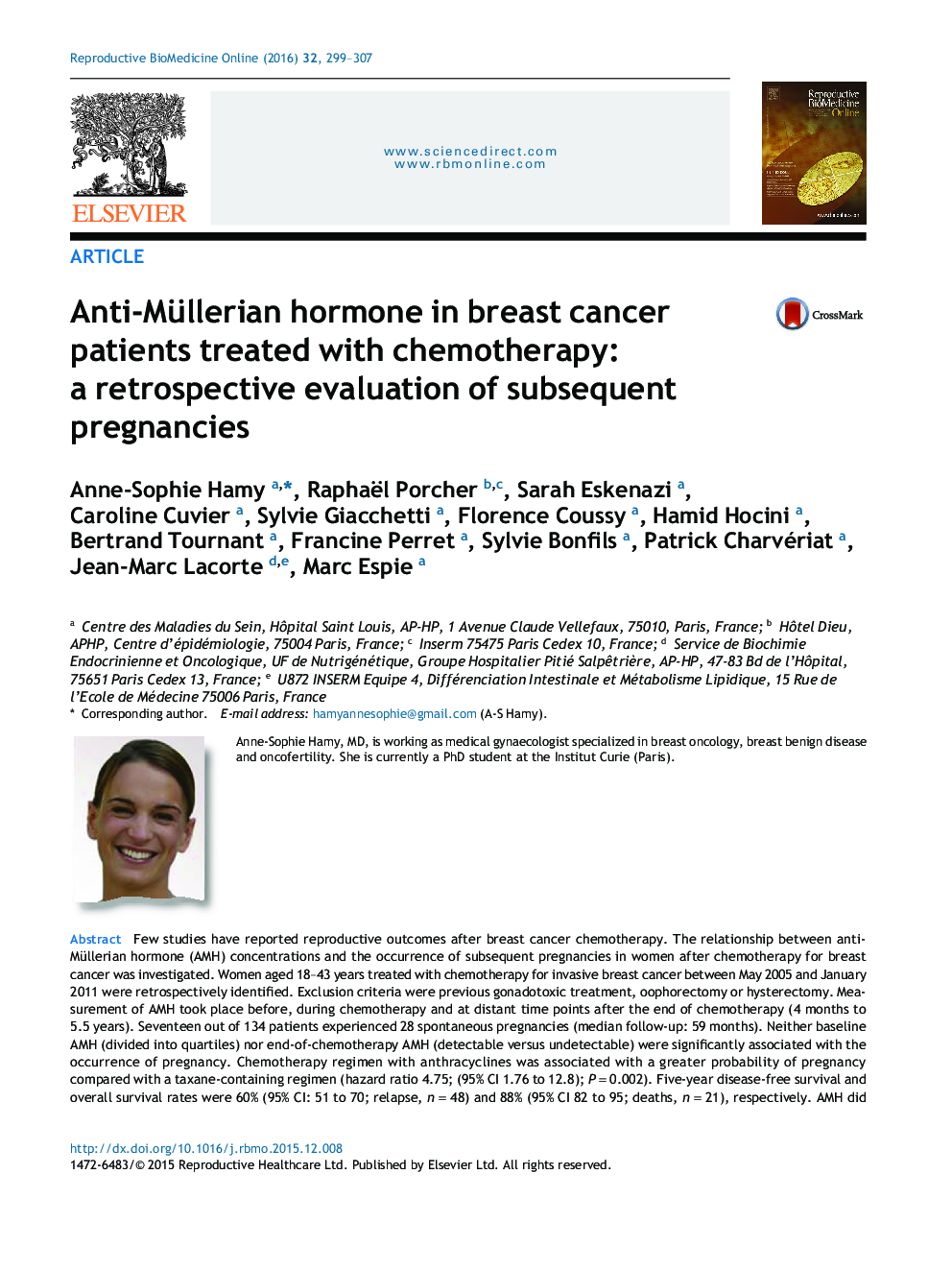| Article ID | Journal | Published Year | Pages | File Type |
|---|---|---|---|---|
| 6188555 | Reproductive BioMedicine Online | 2016 | 9 Pages |
Few studies have reported reproductive outcomes after breast cancer chemotherapy. The relationship between anti-Müllerian hormone (AMH) concentrations and the occurrence of subsequent pregnancies in women after chemotherapy for breast cancer was investigated. Women aged 18-43 years treated with chemotherapy for invasive breast cancer between May 2005 and January 2011 were retrospectively identified. Exclusion criteria were previous gonadotoxic treatment, oophorectomy or hysterectomy. Measurement of AMH took place before, during chemotherapy and at distant time points after the end of chemotherapy (4 months to 5.5 years). Seventeen out of 134 patients experienced 28 spontaneous pregnancies (median follow-up: 59 months). Neither baseline AMH (divided into quartiles) nor end-of-chemotherapy AMH (detectable versus undetectable) were significantly associated with the occurrence of pregnancy. Chemotherapy regimen with anthracyclines was associated with a greater probability of pregnancy compared with a taxane-containing regimen (hazard ratio 4.75; (95% CI 1.76 to 12.8); P = 0.002). Five-year disease-free survival and overall survival rates were 60% (95% CI: 51 to 70; relapse, n = 48) and 88% (95% CI 82 to 95; deaths, n = 21), respectively. AMH did not predict the occurrence of pregnancy. Additional studies assessing ovarian reserve and reproductive outcomes after breast cancer are required.
